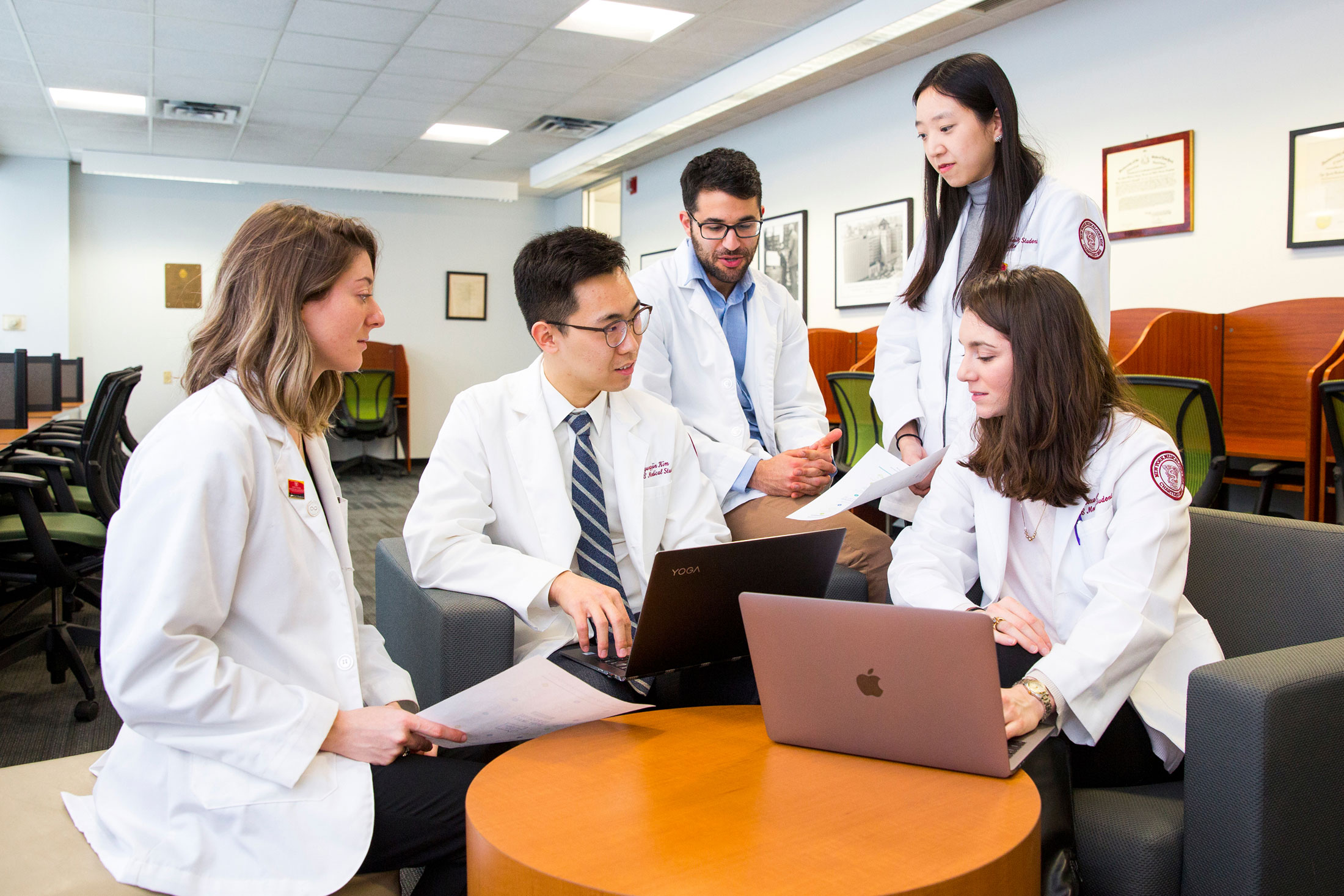Schools
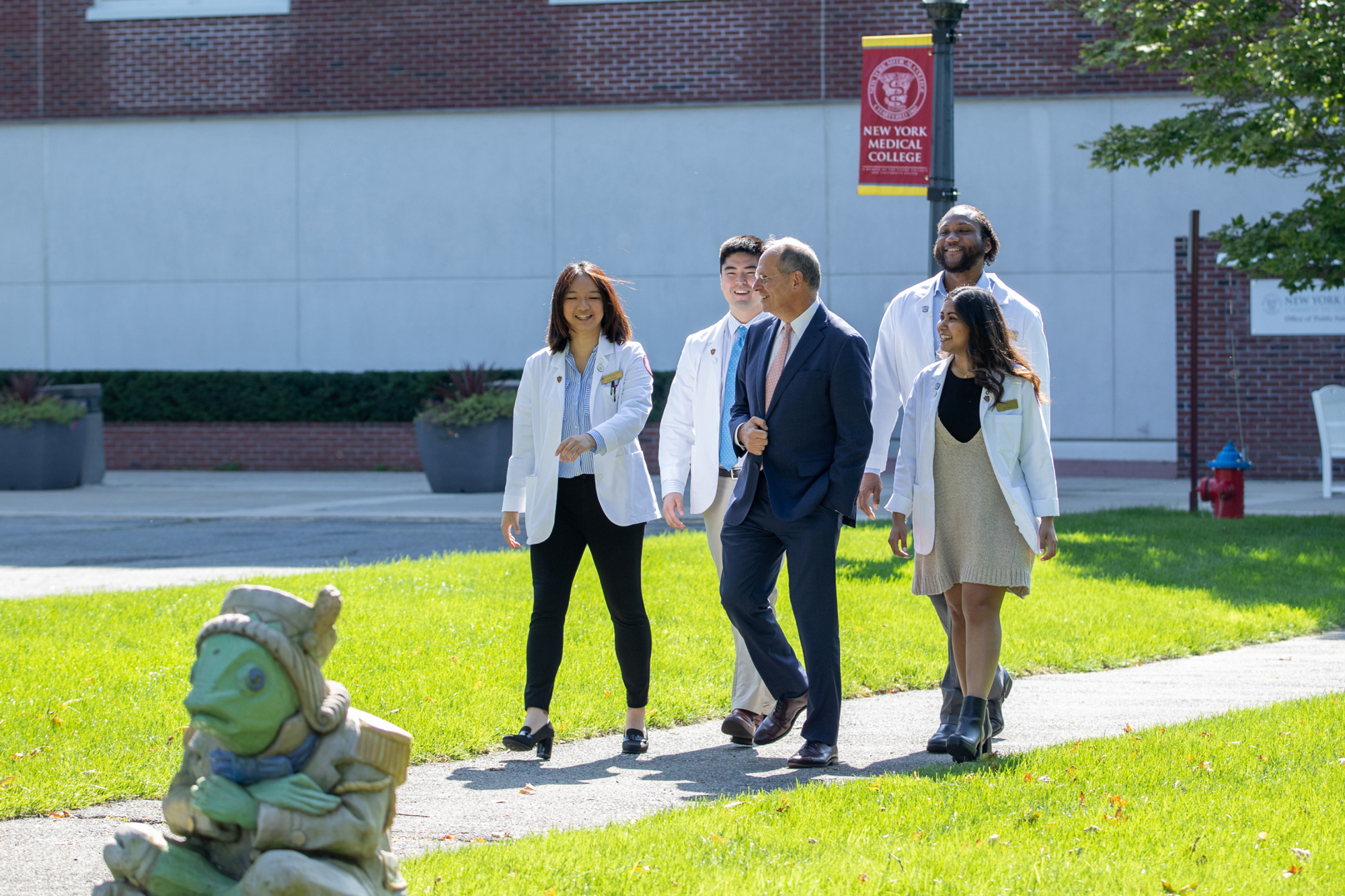
School of Medicine
The School of Medicine offers a robust medical education that prepares you to be a competent and compassionate physician. We introduce you to real life clinical situations early on and have more than 30 affiliated health care facilities. With our program, you’ll be prepared to get the residency match you want.
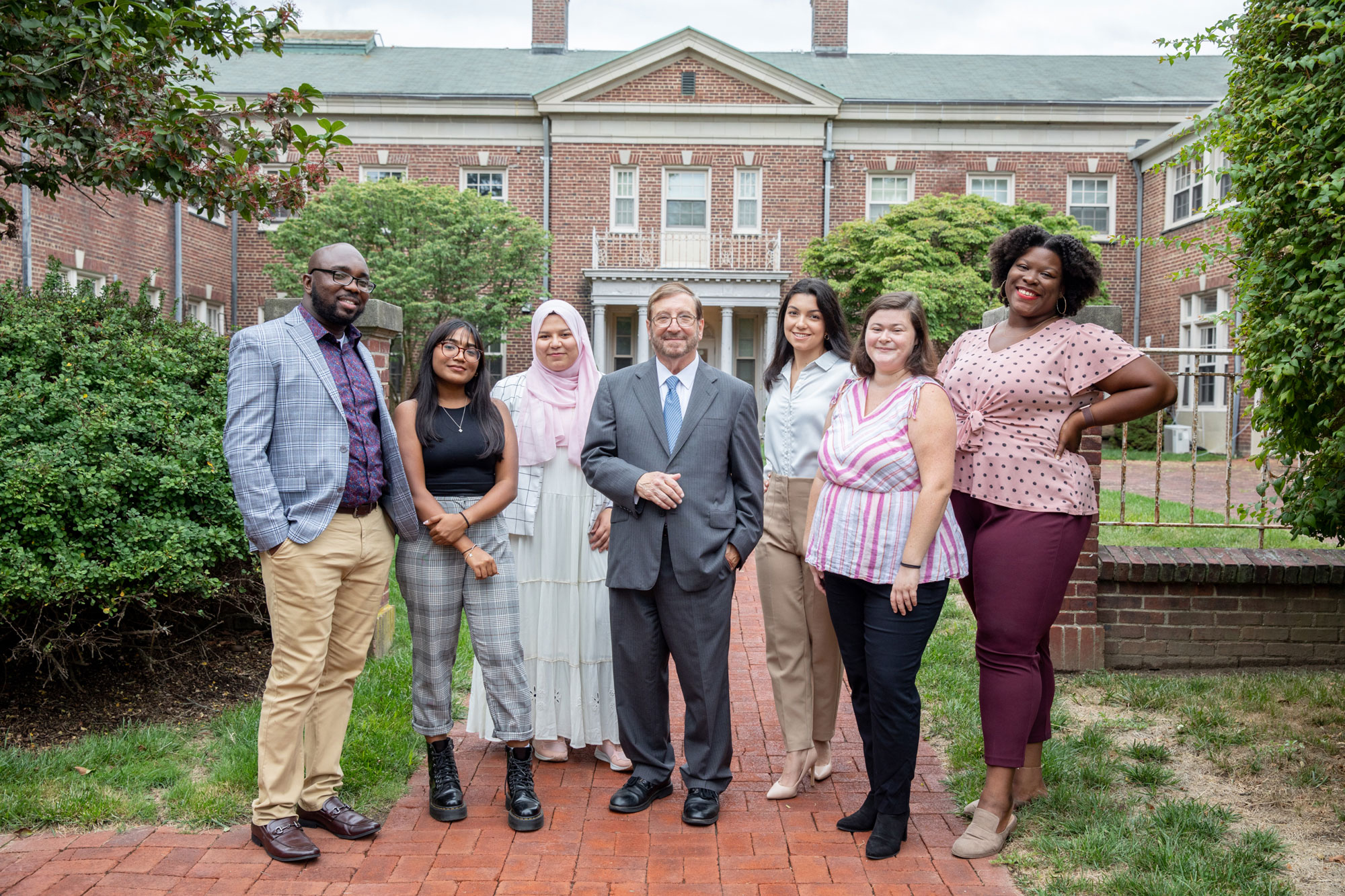
School of Health Sciences and Practice
With degrees in public health, speech-language pathology, and physical therapy, School of Health Sciences and Practice paves the way for health care solutions both regionally and nationally. You’ll be part of a vibrant student body and learn from professors and practitioners across disciplines. We have a consistently high licensure pass rate and employment rate.
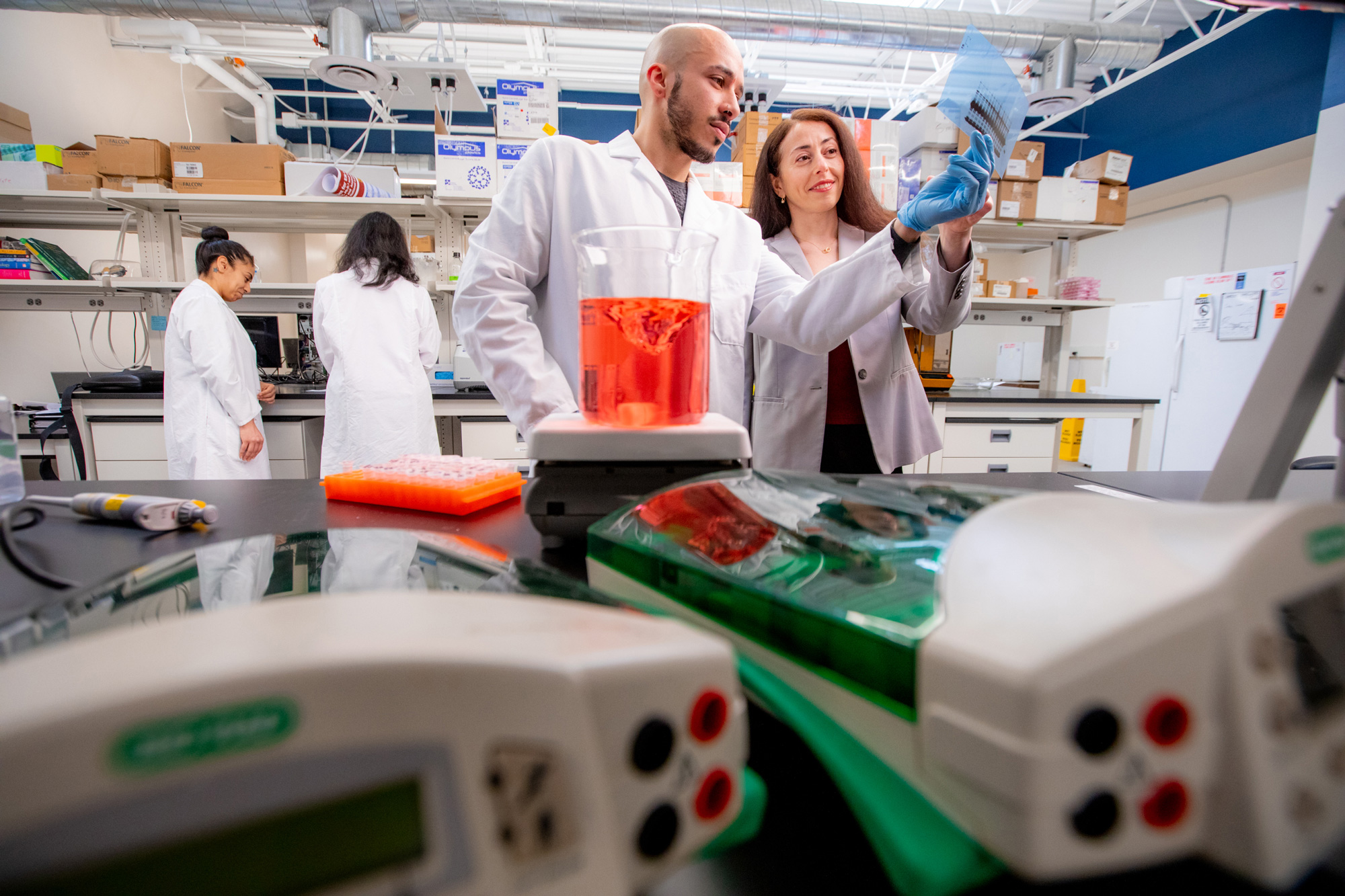
Graduate School of Biomedical Sciences
The Graduate School of Biomedical Sciences is home to groundbreaking medical research in fields like pathology, biochemistry, and physiology. You can conduct research in many areas with our state-of-the-art facilities and labs. You’ll work with your professors and fellow researchers to study biological processes in normal homeostasis and disease.
About NYMC
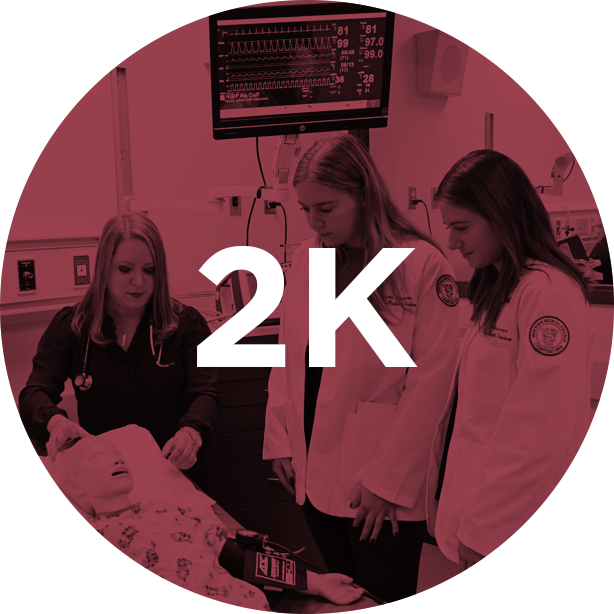
2K Students Enrolled

45 Academic Programs Campus-wide

200K sq. ft. in Research Space
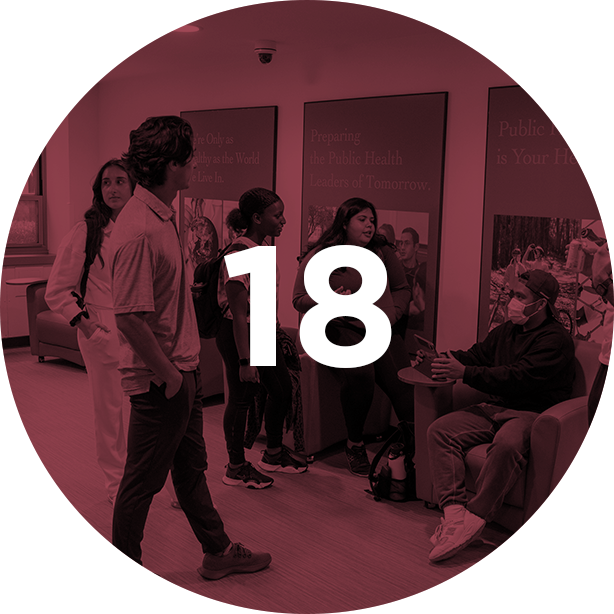
18 Countries Represented in our Student Body
News
New York Medical College and Hudson Regional Health Form Academic Affiliation
Under the Agreement, Hudson Regional Health Becomes a Teaching Site for NYMC Students, with NYMC Sponsoring its Residency and Fellowship Programs
A Full-Circle Journey
How Inclusion and Mentorship Shaped the Path of Elena Mugno, SLP Class of 2026
From Response to Real Impact
Thomas McAdam, M.P.H., is Shaping the Next Generation of Disaster Responders Through Education and Public Health Leadership
Record Numbers, Remarkable Research Define 30th Medical Student Research Forum
More Than 200 NYMC Students Transformed the Medical Education Center into a Vibrant Hub of Research, Discovery, and Scientific Momentum
Upcoming Events
Dec 30Tuesday, December 30, 2025, 6 - 7pm ETStudent Zumba
Dec 31Wednesday, December 31, 2025, 3pm ETNew Years Eve: College early closure at 3 PM
Jan 1Thursday, January 1, 2026 ETNew Year's Day
Jan 1Thursday, January 1, 2026, 5:30 - 7pm ETStudent Yoga & Meditation
Jan 6Tuesday, January 6, 2026, 6 - 7pm ETStudent Zumba
Jan 8Thursday, January 8, 2026, 12 - 2pm ETPhillip Capozzi, M.D., Library Services Showcase
Jan 8Thursday, January 8, 2026, 5:30 - 7pm ETStudent Yoga & Meditation
Jan 13Tuesday, January 13, 2026, 6 - 7pm ETStudent Zumba
What Makes New York Medical College Different
[AUDIO DESCRIPTION] Logo: New York Medical College, A Member of Touro University
Fluted columns stand at the entrance of a brick building.
[Edward Halperin] Founded in 1860, New York Medical College provides degree-granting programs in the health professions at the graduate level.
[AUDIO DESCRIPTION] From above, campus building stand among mature trees and plush lawns.
[Edward Halperin] Here in our 56-acre Valhalla campus, we have five schools, the School of Medicine, the Graduate School of Biomedical Sciences, our School of Health Sciences and Practice, the Touro College of Dental Medicine, and the Touro School of Nursing.
[AUDIO DESCRIPTION] Students stroll on campus wearing scrubs.
[Marina Holz] New York Medical College is a really welcoming and supportive community for the students.
[AUDIO DESCRIPTION] Ainsley Rossi, D.P.T., PT, OCS -- Assistant Professor, Physical Therapy, School of Health Sciences & Practice
[Ainsley Rossi] Being here in Westchester County, we have all of the resources available to a huge city with a really lovely, cozy campus feel.
[AUDIO DESCRIPTION] Malik, Class of 2026, School of Health Sciences & Practice
[Malik] I love the Westchester location. The greenery is really nice.
[AUDIO DESCRIPTION] Deepika, Class of 2027, School of Medicine
[Deepika] Student life is very vibrant here. There's a whole bunch of clubs to get involved.
[Student] Having that on campus housing and being part of that tight-knit community and student body is great.
[Neil Schluger] It's a stone's throw from New York City. You can hop on the train and be in the middle of Manhattan in 35 minutes.
[AUDIO DESCRIPTION] Edward C. Halperin, M.D., M.A. -- Chancellor and Chief Executive Officer; Professor, Radiation Medicine and Pediatrics, School of Medicine
[Edward Halperin] We are, of course, the only academic Medical Center between New York and Albany. We're the only level 1 trauma center in this area, and all that is vital to a growing and prosperous Westchester County.
[MUSIC PLAYING]
[AUDIO DESCRIPTION] Text: School of Medicine
Neil W. Schluger, M.D. -- Dean; Professor, Medicine, School of Medicine
[Neil Schluger] At the New York Medical College School of Medicine, we're educating the next generation of physicians to work with the most sophisticated, advanced tools of science and medicine, but in a manner that's caring, compassionate, and that shows concern for patients from all walks of life.
[AUDIO DESCRIPTION] Mill Etienne, M.D. '02, M P H, F A A N, F A E S -- Vice Chancellor; Associate Dean for Student Affairs; Associate Professor, Neurology; Associate Professor, Medicine, School of Medicine
[Mill Etienne] They've got a very supportive environment for the students, faculty who are heavily engaged.
[AUDIO DESCRIPTION] Jared, Class of 2027, School of Medicine
[Jared] Everybody here, including the students, your peers, the faculty, all want to really see you succeed.
[Pamela Ludmer] We actually start teaching students how to be part of a medical team from the very beginning of medical school.
[AUDIO DESCRIPTION] Faculty demonstrate on a mannequin.
[Student] Auscultate before you palpate.
[AUDIO DESCRIPTION] Katharine Yamulla, M.H.E.A., CHSE -- Director of Clinical Skills and Simulation Center; Assistant Dean for Clinical Skills Education and Assessment, School of Medicine
[Katharine Yamulla] Here at the Clinical Skills and Simulation Center, they get to be the doctor in charge, partnering with our standardized patients and our mannequins, and they can actually do the procedures. They can talk to the patient and diagnose them.
[Pamela Ludmer] After phase 2 of the curriculum, they go into an advanced practice phase.
[AUDIO DESCRIPTION] Pamela I. Ludmer, M.D., M.S., M.M.E.L. -- Dean, Undergraduate Medical Education; Assistant Professor of Medicine and Pediatrics, School of Medicine
[Pamela Ludmer] That's where they're going into the intensive care unit. They're going into the emergency room.
[Neil W. Schluger] We have a wide network of clinical affiliates, and the range of clinical affiliates allows our students to have a broad experience in their clinical rotations.
[MUSIC PLAYING]
[AUDIO DESCRIPTION] Text: School of Health Sciences & Practice
Robert W. Amler, M.D., M.B.A. -- Vice President for Government Affairs; Dean; Professor, Public Health, School of Health Sciences & Practice; Professor, Pediatrics, School of Medicine
[Robert W. Amler] At the School of Health Sciences and Practice, we train our graduate students in the public health disciplines and in the rehabilitative therapies, like physical therapy, speech language pathology.
[AUDIO DESCRIPTION] Vikas Grover, Ph.D., CCC-SLP -- Chair, Department of Rehabilitation Sciences; Division Chief; Academic Program Director; Professor Speech-Language Pathology, School of Health Sciences & Practice
[Vikas Grover] We start our students with the clinical education from day one.
[AUDIO DESCRIPTION] Stefanie Blanco, SLP.D., CCC-SLP, TSSLD, ATP -- Assistant Professor and Director of Clinical Education, Speech-Language Pathology, School of Health Sciences & Practice
[Stefanie Blanco] In students' first semester, they're going to be in our in-house clinic, and they're going to be treating and evaluating pediatric speech language clients.
[AUDIO DESCRIPTION] A student shows a flash card to a boy while a faculty member observes.
[Vikas Grover] We want them to be feeling and understanding the real world from the very beginning. And also when they are taking their foundational courses, they are actually seeing things happening in the clinic at the same time.
[Stefanie Blanco] In addition, we have over 150 clinical affiliation sites for a variety of settings, a variety of populations.
[Malik] I really liked how it went from in-class work to clinical application right afterwards. The best part was seeing, again, that direct carryover from what I learned in the class two months ago, to being able to do those exact same things inside an inpatient facility.
[Ainsley Rossi] Because we are also a medical school, we have access to a lot of the facilities that you may not get in other institutions. So our PT students, instead of just observing a virtual anatomy dissection, actually participate in dissections and get to do their anatomy studies in a cadaver lab.
[AUDIO DESCRIPTION] Angela, Class of 2025, School of Health Sciences & Practice
[Angela] New York Medical College does a great job with connecting different disciplines. So with physical therapy, speech, public health, we're all working together.
[AUDIO DESCRIPTION] Kenneth A. Knapp, Ph.D. Chair and Assistant Professor, Public Health; Director, Dr. P.H. Program, Public Health, School of Health Sciences & Practice
[Kenneth Knapp] Many of our public health students work in the health care sector already. One of the reasons they like us and they come to us is because of the considerable flexibility that we offer.
[AUDIO DESCRIPTION] Bruno, Class of 2025, School of Health Sciences & Practice
[Bruno] It's giving me more knowledge and the ability to apply it directly into real life.
[MUSIC PLAYING]
[AUDIO DESCRIPTION] Text: Graduate School of Biomedical Sciences
[Edward Halperin] The Graduate School of Biomedical Sciences has over 100 faculty in the basic sciences.
[AUDIO DESCRIPTION] Marina K. Holz, Ph.D., M P H '23 -- Dean; Professor, Cell Biology and Anatomy, Graduate School of Biomedical Sciences; Professor, Cell Biology and Anatomy, School of Medicine
[Marina Holz] Our graduate students can go on to master's careers, or they can go on to our PhD programs.
[AUDIO DESCRIPTION] Salomon Amar, D.D.S., Ph.D. -- Vice President for Research; Professor, Pathology, Microbiology and Immunology & Pharmacology, Biomedical Sciences; Professor, Dental Medicine, School of Medicine
[Salomon Amar] Every student is exposed and given an opportunity of doing basic research, translational research, and clinical research from bench to bedside.
[Marina Holz] We have one of the three labs in the world that works to produce the flu vaccine that is distributed annually throughout the world. We have top researchers that work on Lyme disease research, concussions, diabetes, and obesity.
[AUDIO DESCRIPTION] Mitchell S. Cairo, M.D. -- Vice Chair and Professor, Pediatrics; Professor, Cell Biology and Anatomy, Medicine & Pathology, Microbiology and Immunology, School of Medicine, Biomedical Sciences
[Mitchell Cairo] We're doing a lot of cutting edge work, and this is a great place to train. There are tremendous opportunities of doing research as a student. For a lot of the therapies that we have developed over the last 35 years, they're now being used around the world.
[MUSIC PLAYING]
[AUDIO DESCRIPTION] Text: Touro College of Dental Medicine at N Y M C
Ronnie Myers, D.D.S., M.S. -- Dean; Professor, Touro College of Dental Medicine at N Y M C
[Ronnie Myers] Touro College of Dental Medicine has made the mission of educating oral health care providers who will be practicing for the next 40 years in the latest technology that's available. We know that interprofessional care results in better patient outcomes.
[AUDIO DESCRIPTION] A student practices on a mannequin, then a patient hugs a clinician.
[Ronnie Myers] Being a member of a medical center campus in which there are schools of medicine, science and health practice, and basic sciences allows the dentist, the physician, the speech and language pathologist, physical therapists to work together for the betterment of the health of our patients.
[MUSIC PLAYING]
[AUDIO DESCRIPTION] Lampposts and trees line a brick path that meanders around campus buildings.
[Edward Halperin] New York Medical College has a particular history of being a bastion against bigotry in health science education. We teach in diverse communities. We are very proud of that. It is part of our institutional DNA.
[Mill Etienne] Our student body is very diverse.
[AUDIO DESCRIPTION] Male and female students of different ethnicities gather in a lab. One student wears a hijab.
[Mill Etienne] It's one of the most diverse student bodies in the United States.
[Edward Halperin] In 2011, the college became part of the Touro College and University system. We take great pride in accommodating religious practice and observance on this campus.
[Solomon Amar] NYMC is deeply involved into giving back to the community, and we instill this philosophy into our students.
[AUDIO DESCRIPTION] A student checks a person's blood pressure at a community event.
[Jared] Part of our experience here is volunteering and doing community service.
[Student] We've been able to provide that compassionate care to the patients who traditionally have not had access to health care.
[MUSIC PLAYING]
[AUDIO DESCRIPTION] A student checks a patient's vital signs in an exam room, and an instructor works at a student's side in a lab.
[Edward Halperin] We are doing great things at New York Medical College. Great things are happening here. We have an honorable past, a strong and vibrant present, and the future is promising.
[AUDIO DESCRIPTION] Students hold "I matched" signs and pose for a group photo amid colorful confetti.
Logo: New York Medical College, A Member of Touro University
[MUSIC FADES]
Research
At New York Medical College, we’re driven by innovative research across disciplines. Students have an opportunity to learn from and collaborate with leading researchers in areas like cardiovascular disease, neuroscience, cancer, metabolic disorders, infectious diseases, disaster medicine, and more.
Our campus is home to more than a dozen core research facilities and laboratories and more than 200,000 square feet of dedicated research space. With more than half of our research funding coming from the National Institutes of Health, we have over 150 scientists using our facilities to discover the next medical breakthrough. As a student, you'll have access to the college's vast resources.
Why NYMC?
Vast Network of Affiliates
Our network includes approximately 500 clinical affiliates, including major medical centers, community hospitals and ambulatory care facilities, giving you access to a wide range of training opportunities.
Suburban Serenity, Urban Opportunity
Suburban campus shared with Westchester Medical Center, we’re 30 minutes from NYC.
Tomorrow’s Health Care Team Starts Here
With programs dedicated to medicine, rehabilitation, public health, and biomedical sciences, we offer degrees across the health care spectrum and our students work together, just as they will when treating patients.
Respect & Dignity
Our commitment to treating everyone - faculty, students, staff, patients - with dignity and respect dates back to our earliest years, and we continue to foster a welcoming environment.
A Humanistic Approach
Here, students learn to treat people, not diseases, and are trained to provide skilled and compassionate care.

